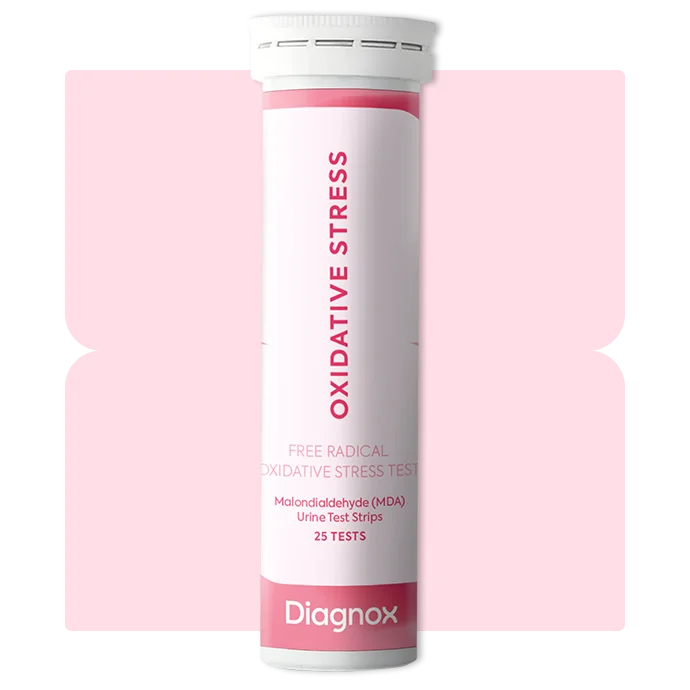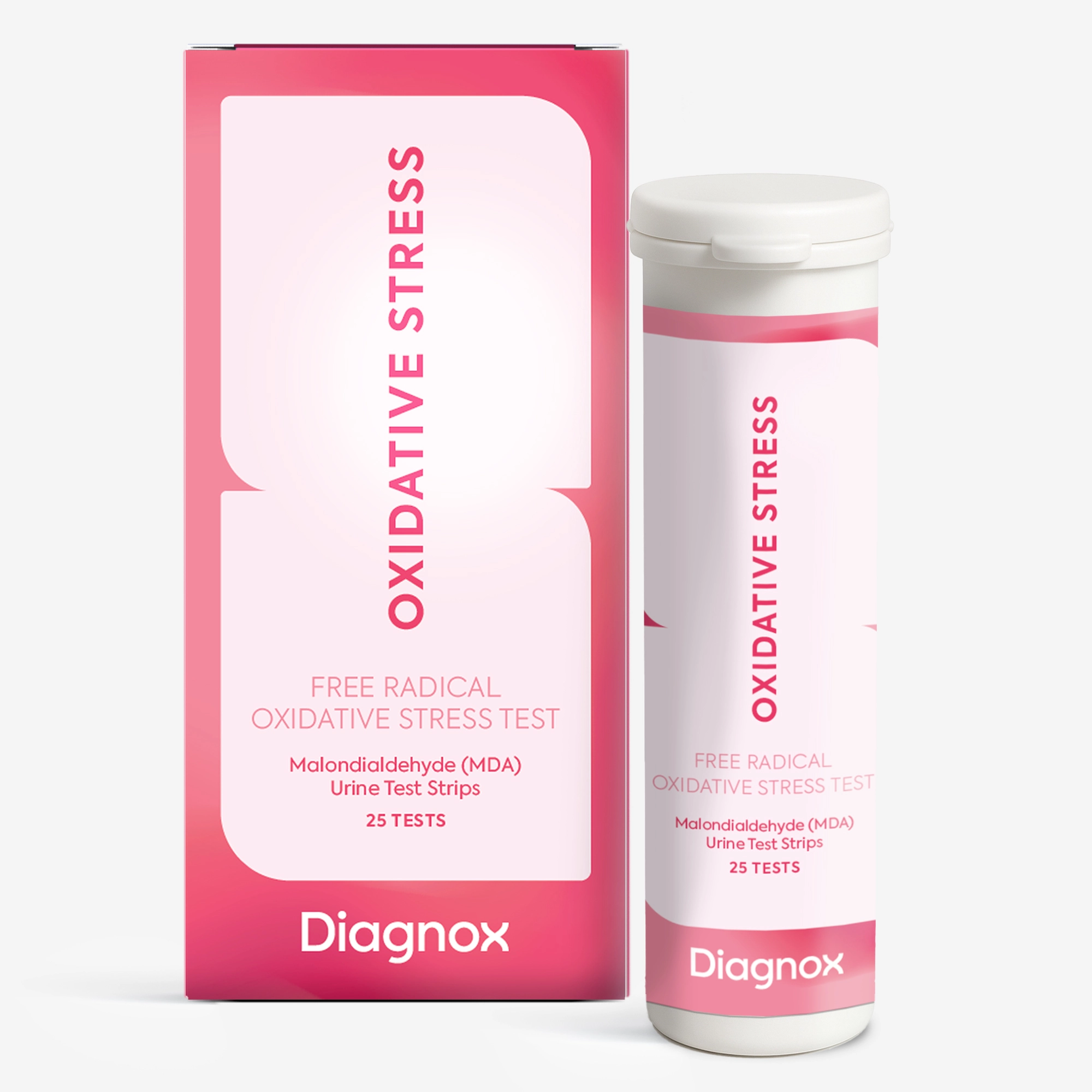Enjoy free standard shipping on all orders!




Oxidative stress occurs when harmful free radicals overwhelm the body’s natural antioxidant defenses, damaging cells, proteins, and DNA. This imbalance has been linked to aging and multiple health conditions, including cardiovascular disease, diabetes, and neurodegenerative disorders.
The Diagnox® Oxidative Stress Test provides a fast and convenient way to check your body’s oxidative balance. By measuring urinary malondialdehyde (MDA)—a key by-product of lipid peroxidation—the test offers a snapshot of oxidative damage occurring inside your cells. Elevated MDA levels are widely recognized as an indicator of increased free radical activity and oxidative stress.
Using the test is simple: immerse the strip in urine for one second, wait three minutes, and compare the test pad color to the included chart. The results help you understand whether your oxidative state is normal, elevated, or severe, encouraging you to make informed lifestyle adjustments.
Regular monitoring can reveal how choices like diet, exercise, stress management, or exposure to pollutants affect your cellular health. While not a diagnostic tool, the Oxidative Stress Test empowers you to take proactive steps toward reducing free radical burden, supporting healthy aging, and maintaining long-term wellness.
Oxidative stress occurs when harmful free radicals overwhelm the body’s natural antioxidant defenses, damaging cells, proteins, and DNA. This imbalance has been linked to aging and multiple health conditions, including cardiovascular disease, diabetes, and neurodegenerative disorders.
The Diagnox® Oxidative Stress Test provides a fast and convenient way to check your body’s oxidative balance. By measuring urinary malondialdehyde (MDA)—a key by-product of lipid peroxidation—the test offers a snapshot of oxidative damage occurring inside your cells. Elevated MDA levels are widely recognized as an indicator of increased free radical activity and oxidative stress.
Using the test is simple: immerse the strip in urine for one second, wait three minutes, and compare the test pad color to the included chart. The results help you understand whether your oxidative state is normal, elevated, or severe, encouraging you to make informed lifestyle adjustments.
Regular monitoring can reveal how choices like diet, exercise, stress management, or exposure to pollutants affect your cellular health. While not a diagnostic tool, the Oxidative Stress Test empowers you to take proactive steps toward reducing free radical burden, supporting healthy aging, and maintaining long-term wellness.















